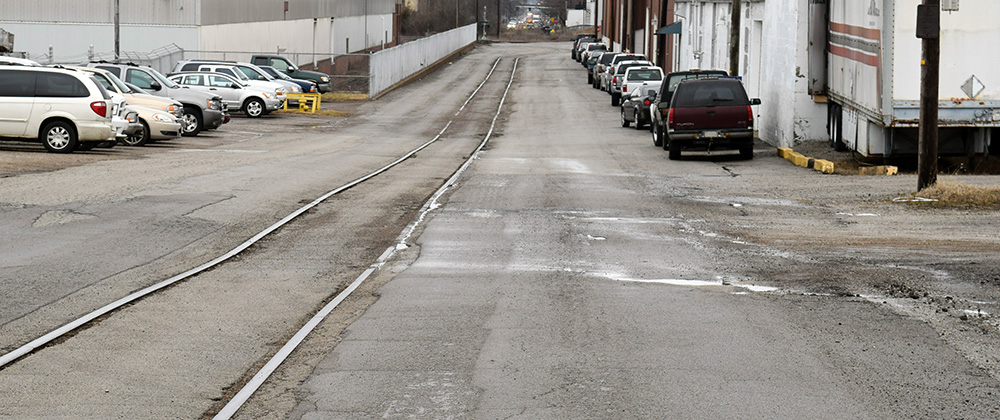
Street Trackage
At the far south edge of town a long track runs up the middle of South 8th Street for delivering coal to the city electric plant.
Located off the former C&O line running from Cincinnati through Richmond and on to Chicago, this long spur diverged from the main at South O Street and ran south for less than a mile to the power plant. It was an interesting operation as Richmond Power and & Light was actually a Pennsylvania RR customer. Coal for the plant once originated from mines on the Pennsy and once a coal train arrived in town a C&O qualified Pennsy crew took the cars down the interchange track and the C&O main for the two mile trip to the plant. I never got to see this operation but always thought it was neat. That’s all in the past now. The former C & O is no longer a through line and deadends a short distance from this location and the power plant no longer uses coal.
Street trackage fascinates me as an opportunity to indulge my love of track modeling. While photographing this track I noted many details worthy of close attention.
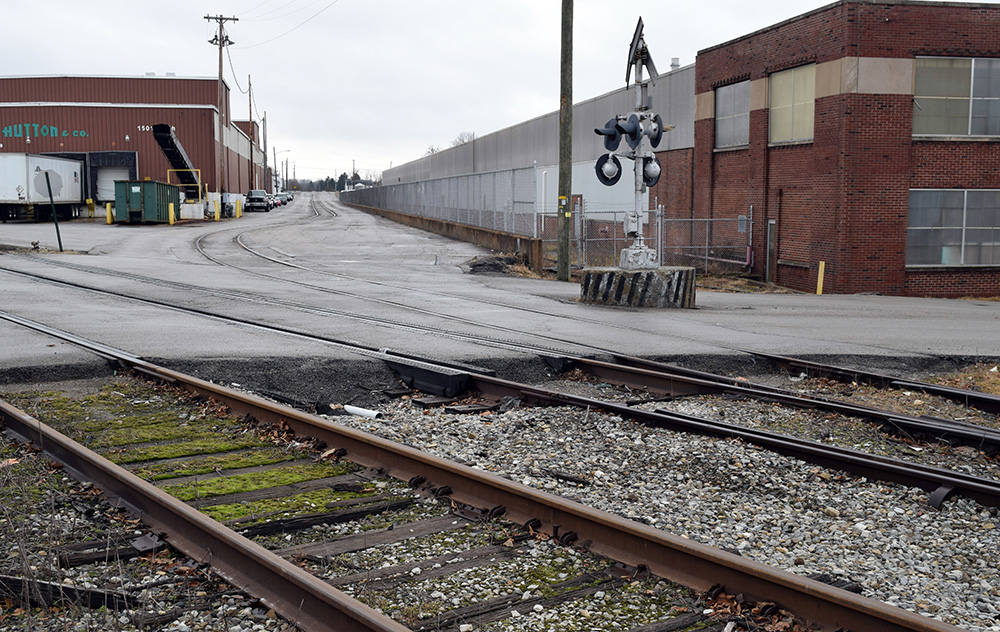
The power plant siding comes off the run around track at a busy intersection (above). The former C&O main is in the foreground. The crossing flashers are located between the RP&L track and an abandoned siding to the factory on the right. The rails for this siding are buried under the pavement and have been cut on the opposite side of the crossing. The turnout for this track has also been removed. With these details and the change in elevation, it all makes for interesting modeling.
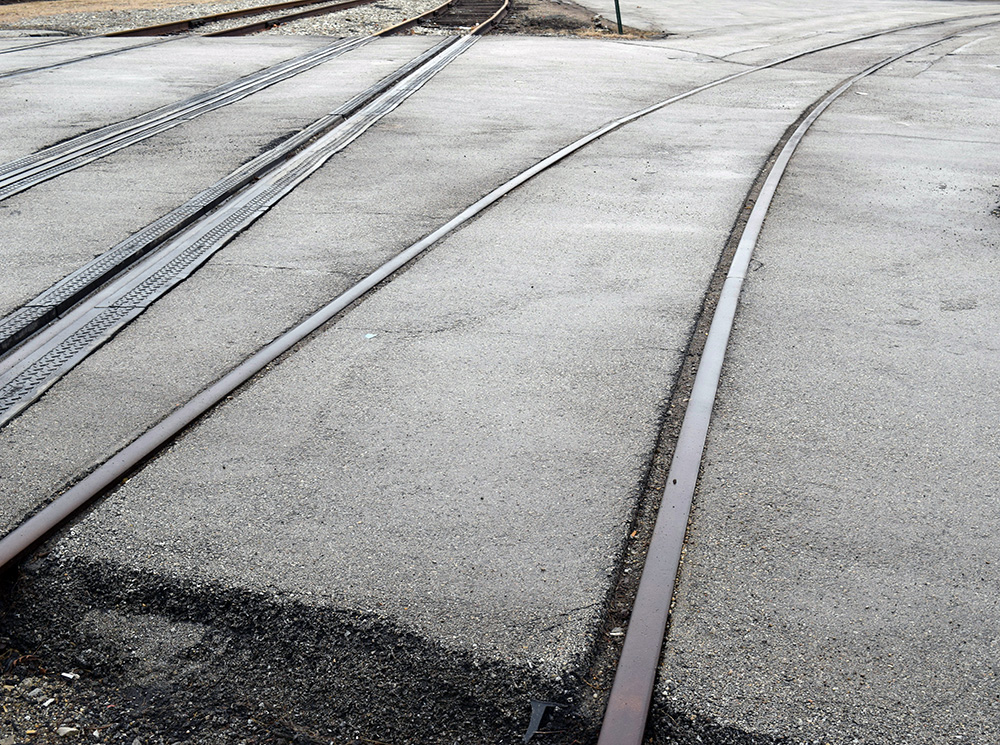
There are numerous details to take note of. The siding has no flange guards through the crossing while the running track does. It’s speculation as to how they cut the flangeways through the soft asphalt. (Did they use an older truck with oversized flanges for clearance?)
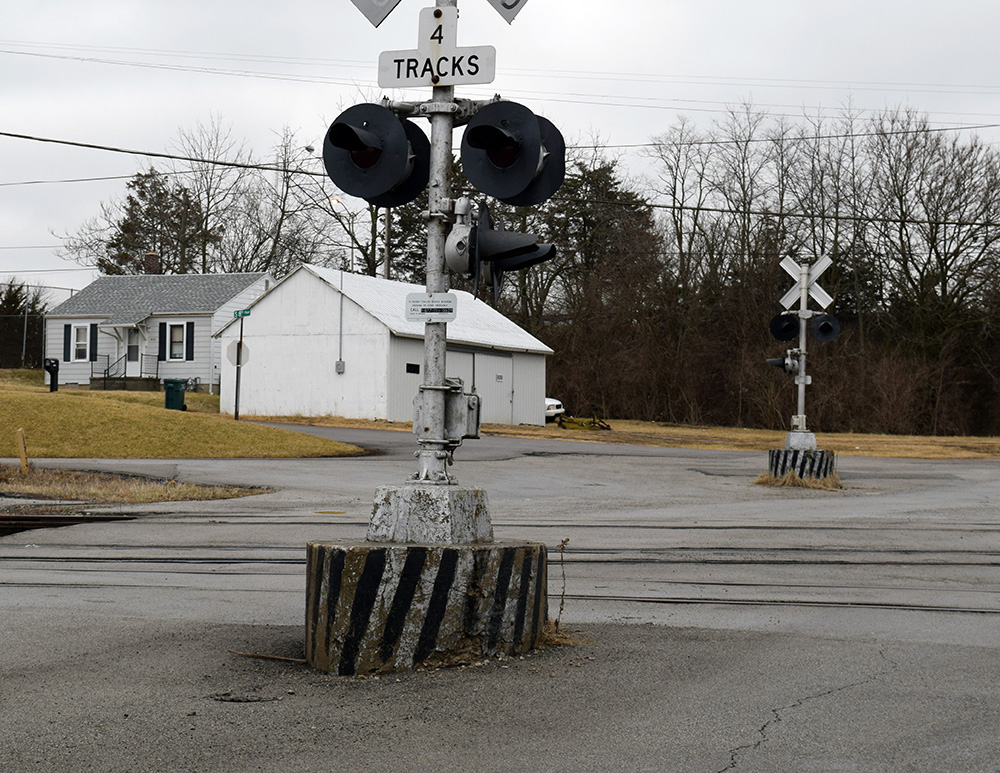
The crossing flashers are raised on substantial concrete foundations to protect them from vehicles. There is a lot of semi truck traffic in this area and the extra height increases the visibility of the flashers for truck drivers.
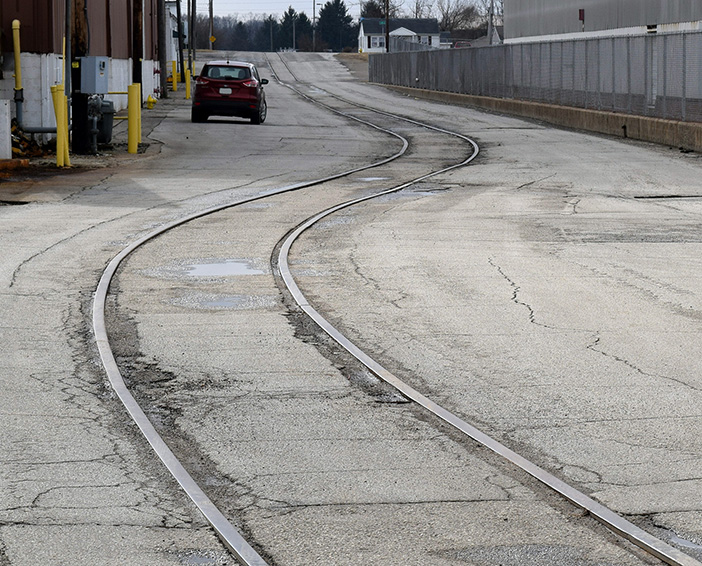
Because of the siding to the factory on the right, the placement of the turnout for this track isn’t optimal, so to have as wide a radius as possible and to maintain clearance for cars and trucks, the railroad employed this short s-curve. It isn’t as sharp as it appears.
A second point of interest is the grade in the distance as the track follows the contours of the street. I confess it looks worse in the image than in reality and the distance traveled is short but it is still a far cry from mainline standards.
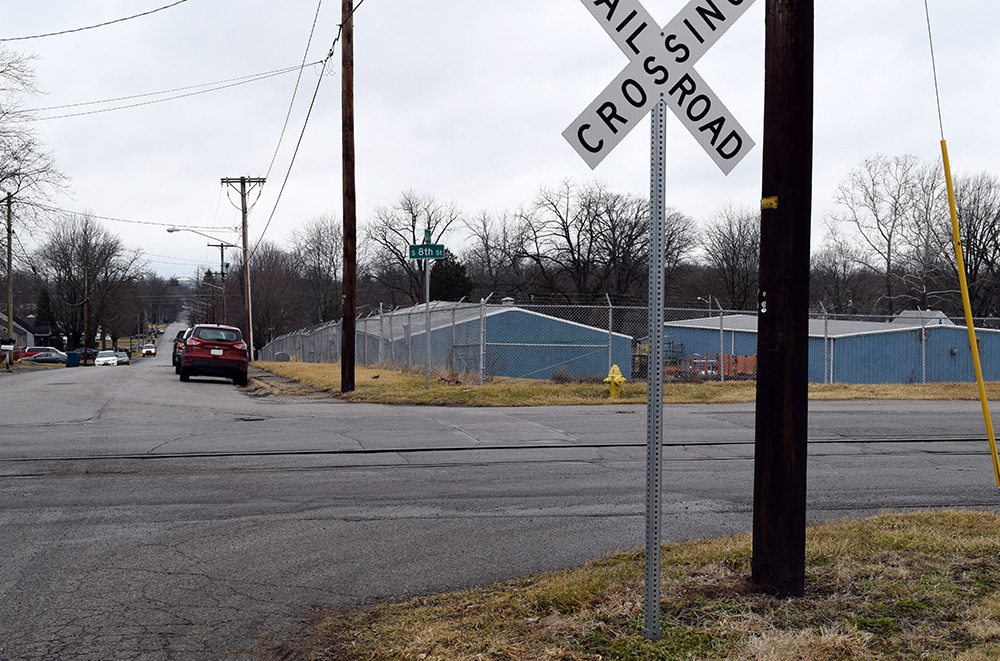
There is one cross street with a simple crossbuck for the protection of traffic.
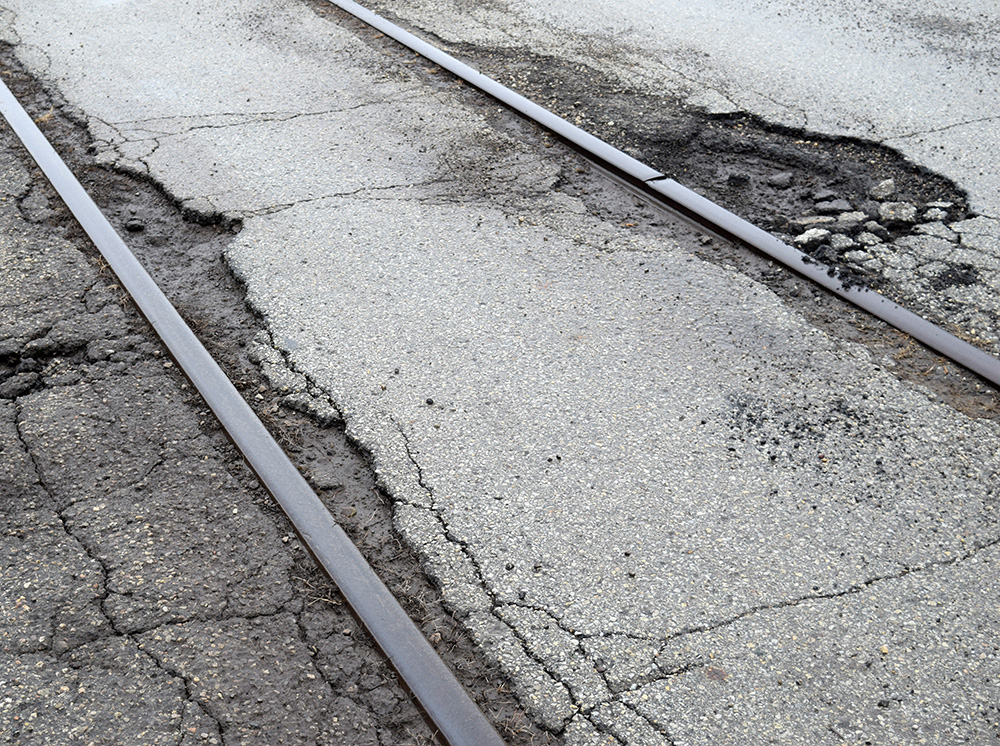
Along the length of the siding, the pavement is cracked and crumbling from water infiltration and the flexing of the track at the rail joints. This type of detailing gets the modeling juices flowing for me.
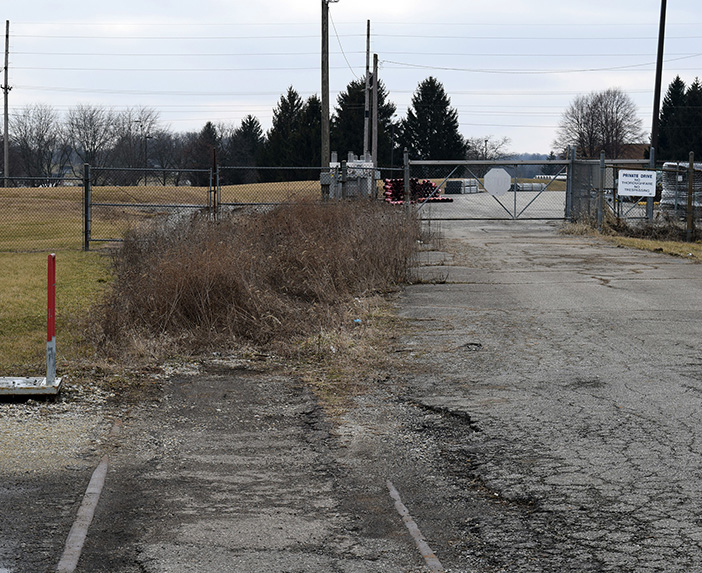
At the end of South 8th Street, the spur enters the power plant property and curves to the right where the coal was once unloaded and stockpiled. RP&L no longer uses coal as a fuel source and this track hasn’t been used in several years as evidenced by the rust and weed growth.
I’ve modeled track in pavement in HO but never in quarter-inch scale. I didn’t include any street trackage on the I & W or my current 13th and North E project because it wasn’t an appropriate choice for either situation. However, the next cameo will feature track in pavement and I’m looking forward to indulging myself with the modeling.
Regards,
Mike
It’s perhaps the most accessible form for railroading. In these places in the street it shares a place with our cars and with us. Out there in the street, we could kneel down and touch those same rails as if to prove that point.
It’s a study in the different needs of each form of transportation and how they relate to each other in terms of texture and shape. As the tracks move and shift independent of the pavement, how the edges fray from wear and use. I like this evidence of a life like existence in something so completely un-alive.
We all seem to describe railway track in the streets in terms of how it weaves its way around the built environment. I like this too. It’s the only time we have a trail of evidence to describe a movement. In most other forms of transportation or movement, we’re left with a memory of how that thing moved and yet in these rails we have proof of how they stepped by where they could go.
Finally, isn’t it neat how these massive trains are so delicately balanced on such narrow wheels and fine flanges. Where the car requires a wide expanse of smooth surface, the train only seems to need a narrow rail’s head and a place for it’s delicate flange to guide its travels.
As I work through this I start to wonder why more people don’t model it.
Thankfully, places like this exist for each of us to find. Thankfully, more immediately, your patience while I wander through a comment like this. Sorry.
Chris
“As I work through this I start to wonder why more people don’t model it.”
Stay tuned Chris.
Regards,
Mike